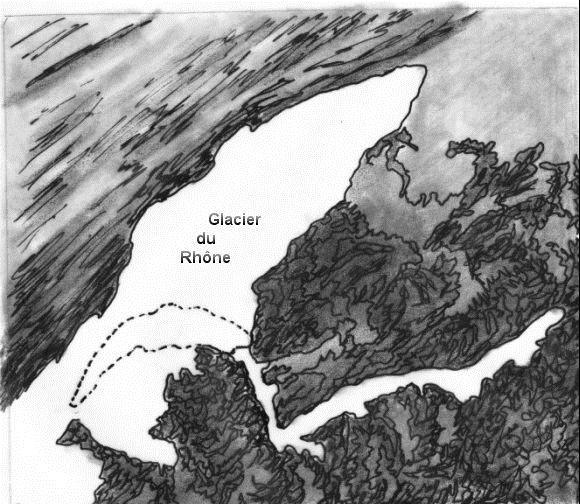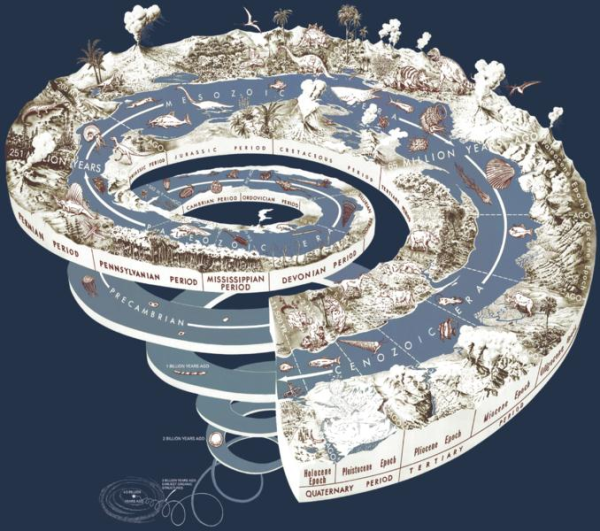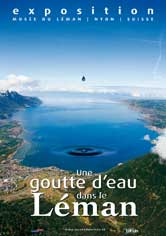
 Le lac Léman (aussi appelé lac de Genève dans certaines régions) est un grand lac d'origine glaciaire situé entre la Suisse et la France. Son nom, probablement d'origine celtique, nous est parvenu via le latin lacus Lemanus.
Le lac Léman (aussi appelé lac de Genève dans certaines régions) est un grand lac d'origine glaciaire situé entre la Suisse et la France. Son nom, probablement d'origine celtique, nous est parvenu via le latin lacus Lemanus.
Le lac est en forme de croissant ; le rivage nord et les deux extrémités sont suisses, le rivage sud est français. La frontière passe au milieu du lac. Il a une superficie de 582 km2 pour 89 km3 de volume, une longueur de 73km sur 14km de largeur, et une profondeur moyenne de 154 m (max 310m). Il est situé à 372m d'altitude.
Le Léman est traversé d'est en ouest par le Rhône. Sa formation a des origines multiples : plissement tectonique pour la partie du Grand-Lac et action du glacier du Rhône pour le Petit-Lac (entre Yvoire et Genève). Il s'est constitué lors du retrait du glacier du Rhône après la dernière période glaciaire, il y a près de 15 000 ans, soit vers la fin du Pléistocène.
Le lac reçoit de l'eau de plusieurs rivières provenant des cantons limitrophes et du département de la Haute-Savoie. Le Rhône est l'apport le plus important car il regroupe toutes les rivières et torrents des versants du canton du Valais et une partie de celles de Vaud. Les eaux du Rhône ne se mélangent pas en été avec celles du lac ; c'est le contraire en hiver. Bien que situé à la bordure des Alpes, le lac Léman, par la masse d'eau qu'il contient, crée autour de lui un microclimat. En particulier à Montreux, et à ses abords immédiats où l'on peut observer pousser des palmiers, des agaves ou d'autres plantes exotiques.En hiver, le lac restitue la chaleur mise en réserve durant l'été et adoucit le rude hiver montagnard. En été, il rafraîchit tout son pourtour. Il faut une douzaine d'années pour que les eaux du lac soient complètement brassées. C'est la durée de rétention des eaux.
Les eaux du Léman sont riches en substances dissoutes, notamment carbonates et sulfates de calcium et magnésium. L'eau y est de bonne qualité (très peu de nitrates, dureté moyenne, température constante, pratiquement pas de turbidité); elle contient quelques pesticides en traces, à des teneurs bien inférieures à celles fixées pour la production d'eau de boisson. A l'échelle de la distribution d'eau potable, le Léman constitue une ressource infinie.

La cache est placée près du musée du Léman, qui fourmille d'informations intéressantes!
Pour loguer cette cache vous envoyer vos réponses aux questions suivantes :
Question 1 : De quel glacier le Léman prend-il son origine?
Question 2 : A quelle époque géologique le Léman s'est-il formé?
Question 3 : Quel phénomène crée un micro-climat?
Question 4 : L'eau du Léman est-elle potable?
Question 5 : Cherchez combien d'années en moyenne faut-il a une goutte d'eau pour traverser le lac?
Question 6 : Calculez pendant combien d'années le Léman pourrait-il abreuver la population suisse?
Question 7 : Décrire un élément de l'exposition au musée du Léman?
Question 8 : Quel signe particulier trouvez-vous sous vos pieds à l'endroit de la cache? A votre avis, pourquoi est-il là?
Optionnel : Poster une photo de vous ou votre gps vers le lieu de la cache
Pour la petite histoire : http://www.oliviergonet.com/Lemancopie/Naissance.htm


The Lake Geneva is a big lake of glacial origin situated between Switzerland and France. Its name, probably of Celtic origin, reached us via the Latin lacus Lemanus.
The lake is in the shape of crescent ; the north and both extremities are Swiss, the south is French. The border passes in the middle of the lake. It has a surface of 582 km2 for 89 km3 of the volume, the length of 73km on 14km of width, and a depth averages 154 m (max 310m). It is situated in 372m height.
The Lake Geneva is crossed from east to west by the Rhône. Its formation has multiple origins: tectonic wrinkling for the part of the "Big Lake" and the action of the glacier of the Rhône for the "Little-lake" (between Yvoire and Geneva). It constituted during the retreat of the glacier of the Rhône after the last glacial period, about 15 000 years ago, is towards the end of the Pleistocene.
The lake receives from some water of several rivers resulting bordering cantons and department of the Haute-Savoie. The Rhône is the most importing contribution because it groups together all the rivers and the torrents of the hillsides of the canton of Valais and a part of those of Vaud. Waters of the Rhône do not mix in summer with those of the lake; it is the opposite in winter. Although situated in the border of the Alps, the Lake Geneva, by the body of water which it contains, creates around him a microclimate. In particular to Montreux, and to its immediate neighborhoods where we can observe pushing palm trees, agaves or other exotic plants.In winter, the lake restores the heat put in reserve during summer and eases the hard mountain winter. In summer, it refreshes all its circumference. A dozen years is needed so that waters of the lake are completely brewed. It is the duration of retention of waters.
Waters of the Lake Geneva are rich in dissolved substances, in particular carbonates and sulfates of calcium and magnesium. The water is there good quality (very few nitrates, average hardness, constant temperature, practically no turbidity); it contains some pesticides in tracks, in contents much lower than those fixed for the production of water of drink. On the scale of the drinking water distribution, the Lake Geneva constitutes an infinite resource.

The hiding place is placed near the museum of the Lake Geneva, which teems with interesting information!
For loging this cache you have to send your answers the following questions:
Question 1: Which glacier gives the Lake Geneva its origin?
Question 2: In which geologic period did the Lake Geneva form?
Question 3: What phenomenon creates a microclimate?
Question 4: Is the water of the Lake Geneva drinkable?
Question 5: Search How many years on average is it necessary to a droplet to cross the lake?
Question 6: Calculate during how many years could the Lake Geneva soak the Swiss population?
Question 7 : Describe an element of the exhibit in the museum?
Question 8: Which sign takes places on the cache? Explain why it is here?
Optionnal :Post a photo of you or your GPS near the place of the cache
